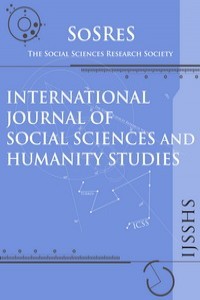FREEWAY SEGREGATION, COMMUNITY SCHOOLS AND THE URBAN POOR
FREEWAY SEGREGATION, COMMUNITY SCHOOLS AND THE URBAN POOR
poverty urban schools, community schools,
___
- Bierman, Karen L., John D. Cole, Kenneth A. Dodge, Mark T. Greenberg, John E. Lochman and Robert J. McMahon (1992), “A Developmental and Clinical Model for the prevention of Conduct Disorder: The FAST-TRACK Program”,
- Development and Psychopathology, Vol. 4, pp. 509-527. Business and Legal Reports Student Life (2008), Teens and Gangs, http://www.hopefs.org/behavior/TeensandGangs.html, [Accessed 7.29.2008].
- Center on the Developing Child (2010) “Persistent Fear and Anxiety Can Affect
- Young Children’s Learning and Development” National Scientific Council on the Developing Child Working Paper 9. Cambridge, MA: Harvard University. Communities http://www.cisdetroit.orgloverviewz.htm#capabilities, [Accessed 9.12.2010]. School (2005), Communities In Schools,
- Communities In Schools (2010), Newsletter of Communities In Schools of Detroit,
- Washington, DC: The Urban Institute. Crowe, Timothy (1991), Habitual Offenders: Guidelines for Citizen Action and Public Responses. Washington D.C.: Office of Juvenile Justice and Delinquency Prevention,
- Department of Justice. U. S. Farmer, Thomas (2000), “The Social Dynamics of Aggressive and Disruptive
- Behavior in School: Implications for Behavior Consultation”, Journal of Educational and Psychological Consultation, Vol. 11, No. 3&4, pp., 299-321. Kutash, Krista and Albert J. Duchnowski (1997), “Create Comprehensive and Collaborative Systems”, Journal of emotional and Behavioral Disorders, Vol. 5, pp. 66-75.
- Lessenberry, Jack (2010), Detroit Public School Crisis, Metro Times, http://metrotimes.com/news/story.asp?id=13589, [Accessed 10.8.2010].
- Lippman, Laura and Shelley Burns (Eds.) (1996), Urban Schools: The Challenge of Location and Poverty, Washington, DC: National Center for Educational Statistics.
- Martin, Elizabeth Anne (2011), Detroit and the Great Migration 1916-1929,
- Bentley.umich.edu/research/publications/migration/ch1.php Mayer, G. Roy (1995), “Preventing Antisocial Behavior in the Schools”, Journal of the Applied Behavior Analysis, Vol. 28, pp. 467-478.
- Mead, Sara and Andrew Rotherham (2007), “A New Deal for Urban Public Schools”, http://www.hlpronline.com/2007/04/rotherham_mead_01.html Law and Policy Review Online
- Reid, John (1993), “Prevention of Conduct disorder Before and After School
- Entry: Relating Interventions and Developmental Findings”, Development and Psychopathology, Vol. 5 No. 1 & 2, pp. 243-262. Seelye, Katherine (2011), Detroit Census Confirms a Desertion Like No Other, http://www.nytimes.com/2011/03/23/us/23/detroit, [Accessed7.28.2011].
- Sprague, Jeffrey and Hill Walker (2000),”Early Identification and Intervention for
- Youth with Antisocial and Violent Behavior”, Exceptional Children, Vol. 66, No. , online, http://www.thefreelibrary.com/Exceptional&children/2000/March/22- p.520-88 [Accessed 8.6.2011]
- Sugrue, Thomas (2011), Automobile in American Life and Society, http://www.autolife.umd.umich.edu/Race/R_Overview/r_Overview.htm, Accessed 4.29.2011]
- Thompson, Heather A. (2001), Whose Detroit? Ithaca, NY: Cornell University Press.
- United States Bureau of the Census (2010), Census Statistics 2010, http://www.2010.census.gov/2010census/popmap/ [Accessed 8.4.2010]
- Başlangıç: 2009
- Yayıncı: Sosyal Bilimler Araştırmaları Derneği
FOREIGN CAPITAL INVESTMENTS AND ECONOMIC CRISES IN TURKEY
Mustafa ÖZTÜRK, Osman Nuri ARAS
AUGMENTED REALITY AS AN EXCITING ONLINE EXPERIENCE: IS IT REALLY BENEFICIAL FOR BRANDS?
TRENDS IN AUTHORITARIANISM: EVIDENCE FROM 31 EUROPEAN COUNTRIES
Sabrina de Regt, Tim Smits, Dimitri Mortelmans
THE IMAGES OF ANGELS IN IRANIAN ART A Civilization Interaction in a Comparative Study
LINE MANAGERS’ ROLE IN CONTINUOUS PROFESSIONAL DEVELOPMENT AND HUMAN RESOURCES
Anubama Ramachandra, Nur Naha Abu Mansor, Norhalimah Idris
THE IMPACT OF COUNTRY-OF-ORIGIN EFFECT ON TURKISH CONSUMERS’ RESPONSE TOWARD FOREIGN ADVERTISEMENTS
INTER-CLUSTER PIPELINES: THE DRIVING FORCE OF KNOWLEDGE CREATION AND ECONOMIC DEVELOPMENT
ANALYZING TOURISM POTENTIAL AND DETERMINING STRATEGIES: CASES OF SOME CITIES IN TURKEY
Yavuz OZDEMİR, Huseyin BASLİGİL
Sibel ÇOBAN, Nihan Mutlu KONAKÇI
ROLE OF SOCIAL FORESTRY IN SUSTAINABLE DEVELOPMENT - A MICRO LEVEL STUDY
